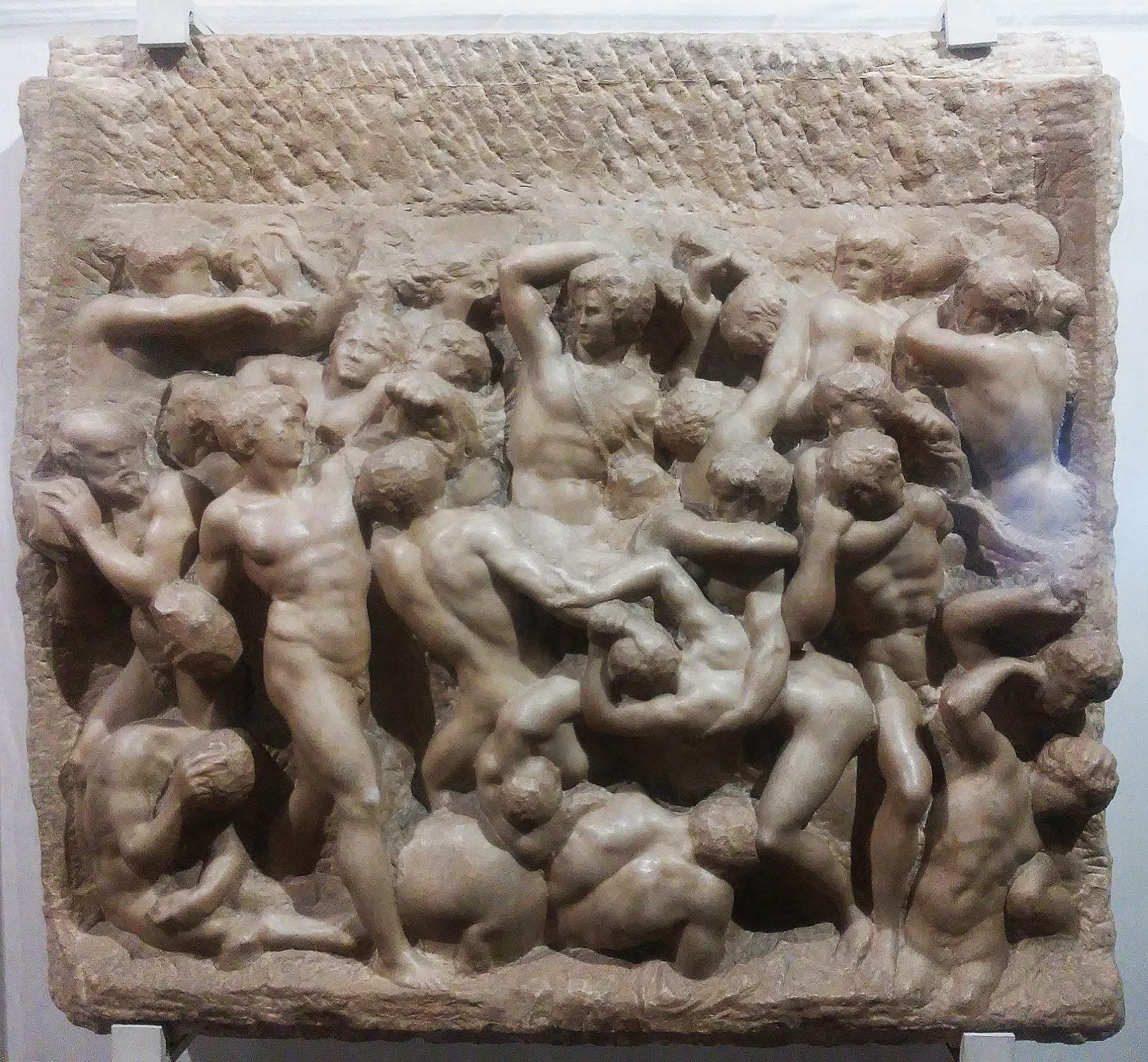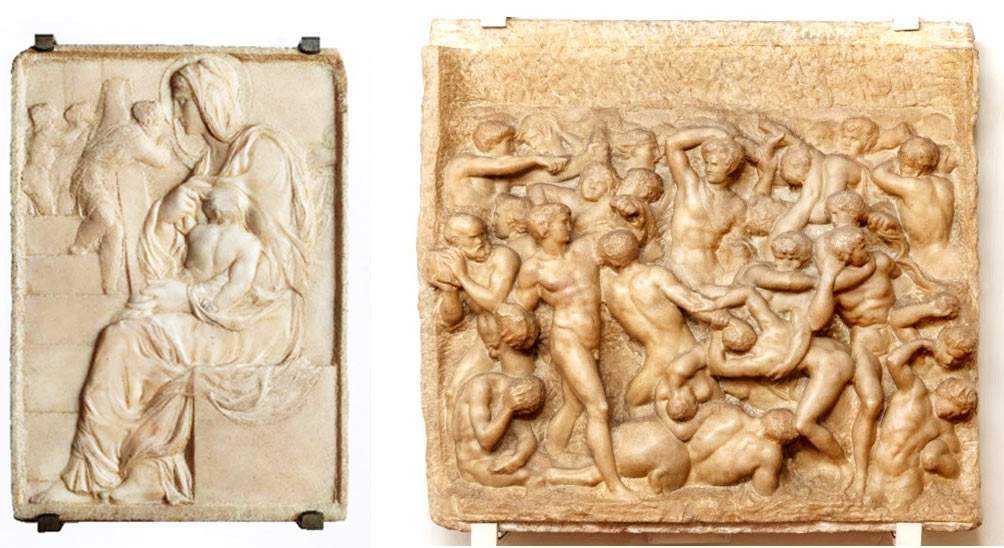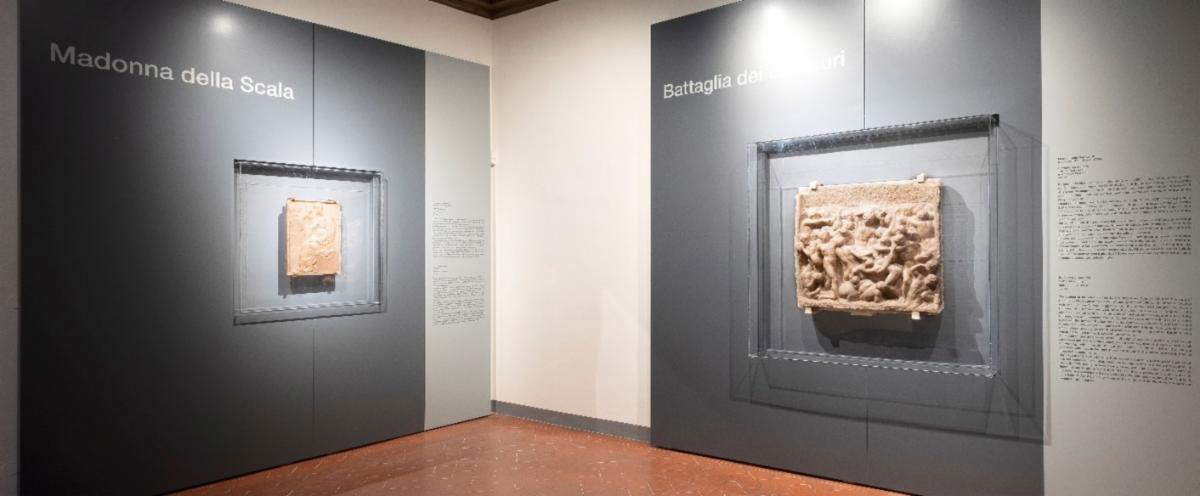The two early masterpieces by Michelangelo Buonarroti (Caprese, 1475 - Rome, 1564), the Madonna of the Stairs from 1490 and the Battle of the Centaurs from 1490-1492(a detailed background on the two works here), have been restored thanks to a donation from the Friends of Florence foundation. The restoration was completed in March but only now has the public at Casa Buonarroti in Florence, where the two works are kept, been able to return to see the two works. The Friends of Florence donation also enabled the refurbishment of the “Marble Room” where both works are displayed in Casa Buonarroti, a museum entirely dedicated to the Renaissance master.
The restoration of the two bas-reliefs was presented at the fifth Friends of Florence Award Grant held at the Art and Restoration Salon in 2020. Restorers Daniela Manna and Marina Vincenti were in charge of the intervention, working under the direction of Casa Buonarroti and the supervision of the Soprintendenza Archeologia Belle Arti e Paesaggio for the Metropolitan City of Florence and the Provinces of Pistoia and Prato.



 The hall of marbles
The hall of marbles The hall of marbles
The hall of marblesMichelangelo sculpted both reliefs during his apprenticeship in the Garden of San Marco, where artists and intellectuals from Lorenzo the Magnificent’s circle gathered. He worked under Bertoldo di Giovanni, the last pupil and collaborator of Donatello, who died in 1491. The artist was just 15 years old when he made the Madonna della Scala. The composition is dominated by the Virgin child at the breast-Michelangelo would later repeat the Madonna’s pose in some of his later works such as the Medici Madonna, the sculptural group in the New Sacristy, and the drawing in Casa Buonarroti known as the “Cartonetto.” The work was still owned by the Buonarroti family after Michelangelo’s death in 1564, but his nephew and heir, Leonardo, reluctantly gave it to Duke Cosimo I de’ Medici, along with unfinished statues that remained in Florence such as the Genius of Victory in the Palazzo Vecchio and the Four Prisons now in the Accademia Gallery. The work was part of the Medici collections until 1616, when Grand Duke Cosimo II gave it to the artist’s great-grandson, Michelangelo Buonarroti the Younger, who wanted to honor the master in the gallery of Casa Buonarroti.
The Battle of the Centaurs, on the other hand, was made between 1491 and 1492. The subject was described by art historians Ascanio Condivi in 1553 as “The Abduction of Deianira” and Vasari in 1568 as “The Battle of Hercules with the Centaurs.” Agnolo Poliziano, the humanist and Lorenzo’s member of the Magnifico’s circle, suggested the subject and Lorenzo commissioned it. However, the work was still unfinished when the great patron died on April 8, 1492. The artist may have based the work on the passage in Ovid’s Metamorphoses (XII, 210-576) that describes the battle between Lapiths and Centaurs at the wedding of Pyritoo and Hippodamia, or on a myth related to the labors of Hercules in which the hero saved his betrothed Deianira from having to marry the centaur Eurito, who was killed in a furious battle. With its tight tangles of limbs and bodies, the relief is reminiscent of classical sarcophagi. The fact that it is unfinished offers a glimpse of the young artist’s skill in sculpting marbles with varying degrees of finish: from the nearly full figures, including the three-quarter view of the hero that anticipates the David, to the delicate reliefs of combatants in the background. The expressions and emotions of even the barely defined figures are striking: the anger of the combatants, the violence of the captors, the pain of the wounded. Marquis Federico Gonzaga was interested in buying it in 1527, but Michelangelo did not part with it before moving permanently to Rome in 1534. It remained with the Buonarroti family and from 1614 to 1874 had a place of honor in the gallery that Michelangelo Buonarroti the Younger created to celebrate his famous ancestor and family benefactor.
“We are extremely grateful to Patricia and Marshal Geller, who supported the renovation of the hall and the restoration of the Battle of the Centaurs, and to the Maher family for their contribution to the Madonna della Scala project,” said Simonetta Brandolini d’Adda, president of Friends of FLorence. “We are delighted to have collaborated with Cristina Acidini, president of the Casa Buonarroti Foundation, and Alessandro Cecchi, director of the museum. Thanks also to Jennifer Celani, area officer of the ABAP Superintendency of Florence, and restorers Daniela Manna and Marina Vincenti who worked in perfect harmony giving us the opportunity not only to preserve these masterpieces but also to learn much more about them. For us, supporting the restoration of these two seminal works means continuing to preserve the artistic legacy of this extraordinary artist who left us some of the greatest masterpieces of the Western canon. After the restoration and (ongoing) maintenance of the David, the Prisons, the River God and, most recently, the Bandini Pietà, our foundation is pleased to continue the essential task of protecting Florence’s cultural heritage for generations to come.”
“Being able to see marble sculptures up close is always an experience that excites, amazes and increases our appreciation for the artist’s genius,” says Cristina Acidini, president of the Casa Buonarroti Foundation. “The restoration and scholarly reevaluations of these works inform our ongoing presentation and safeguarding of the collection. We are deeply grateful for the generosity of the Friends of Florence Foundation and its president Simonetta Brandolini d’Adda, whom I would like to thank on behalf of Casa Buonarroti.”
 |
| Michelangelo's two early masterpieces restored thanks to Friends of Florence |
Warning: the translation into English of the original Italian article was created using automatic tools. We undertake to review all articles, but we do not guarantee the total absence of inaccuracies in the translation due to the program. You can find the original by clicking on the ITA button. If you find any mistake,please contact us.